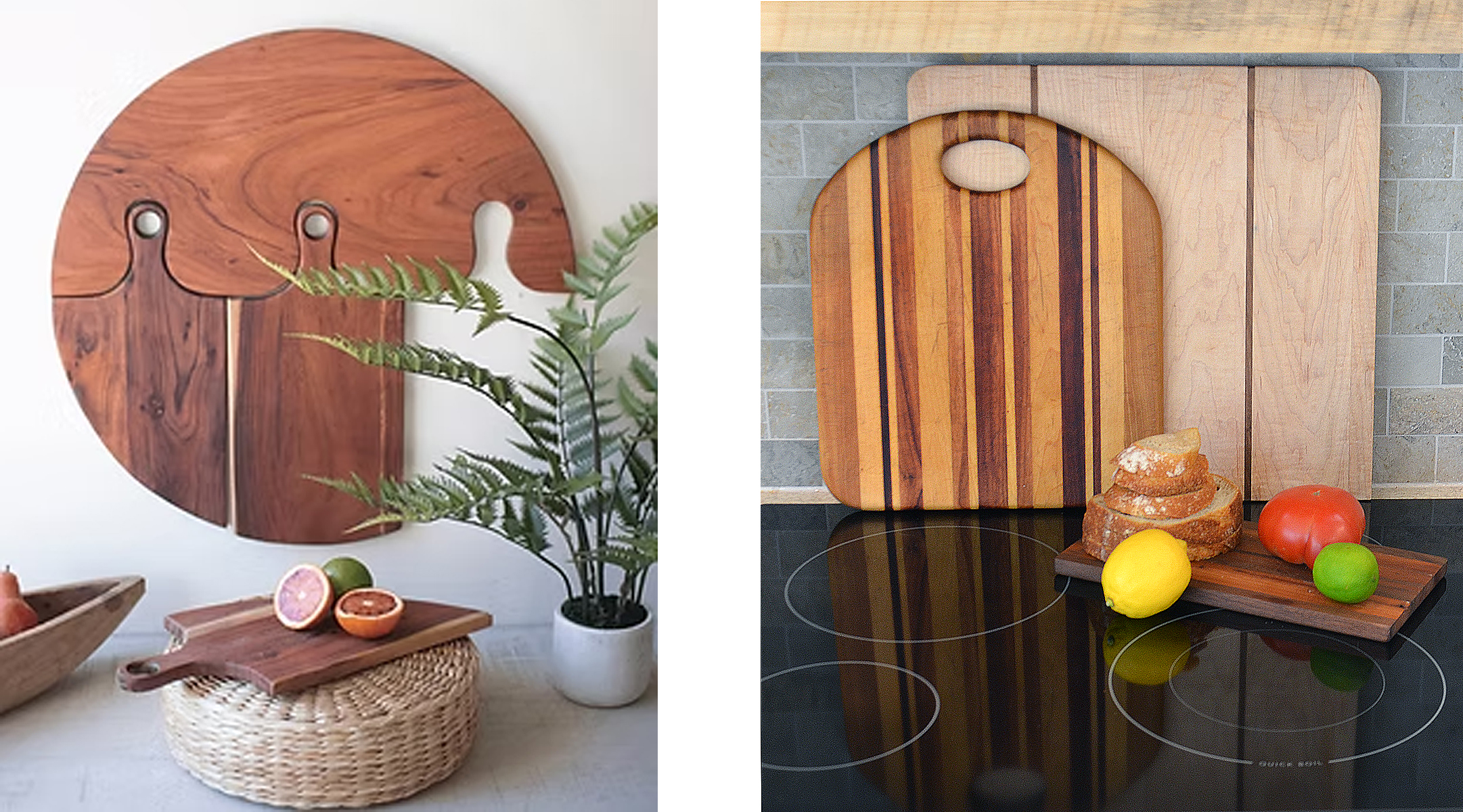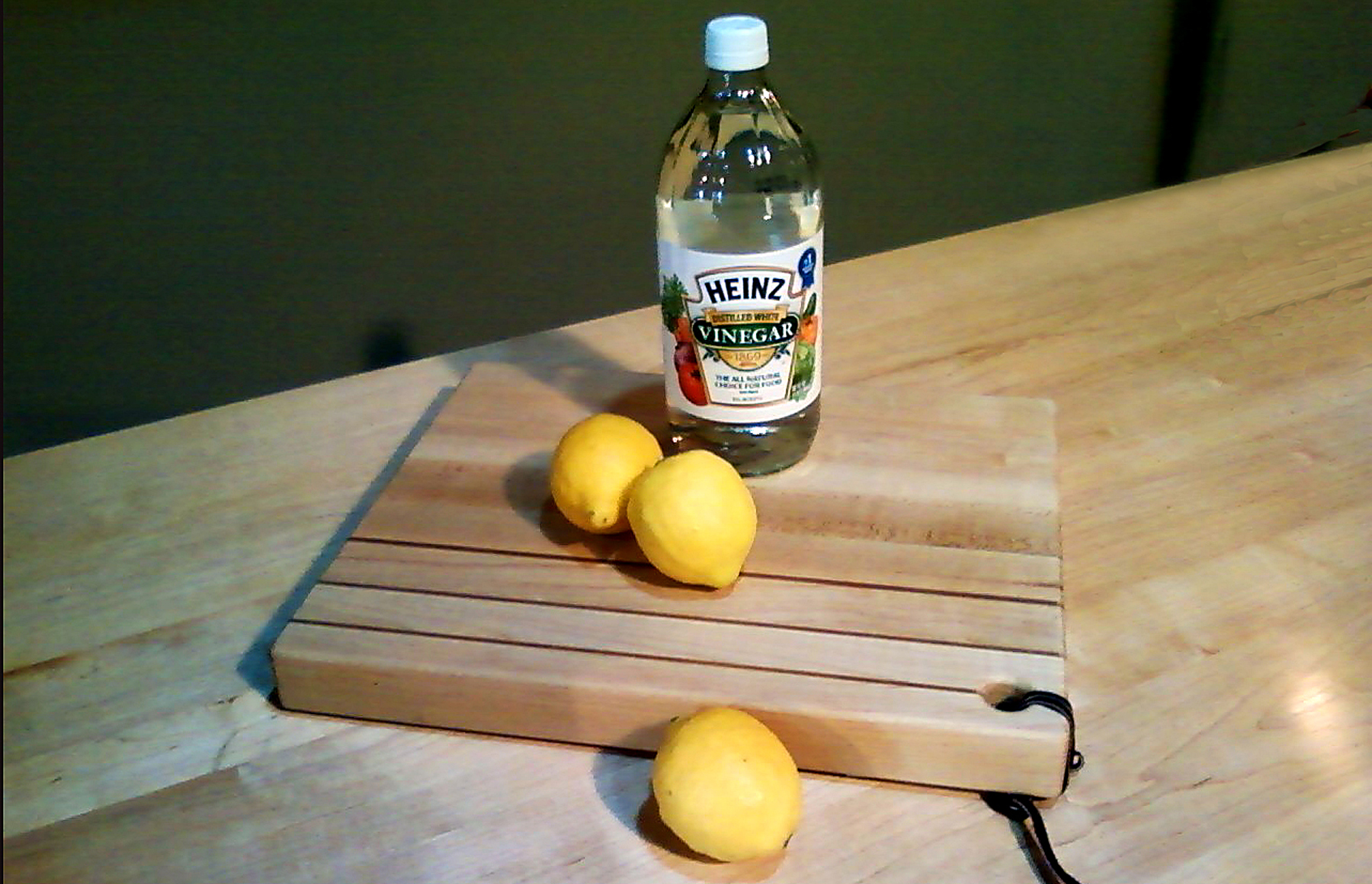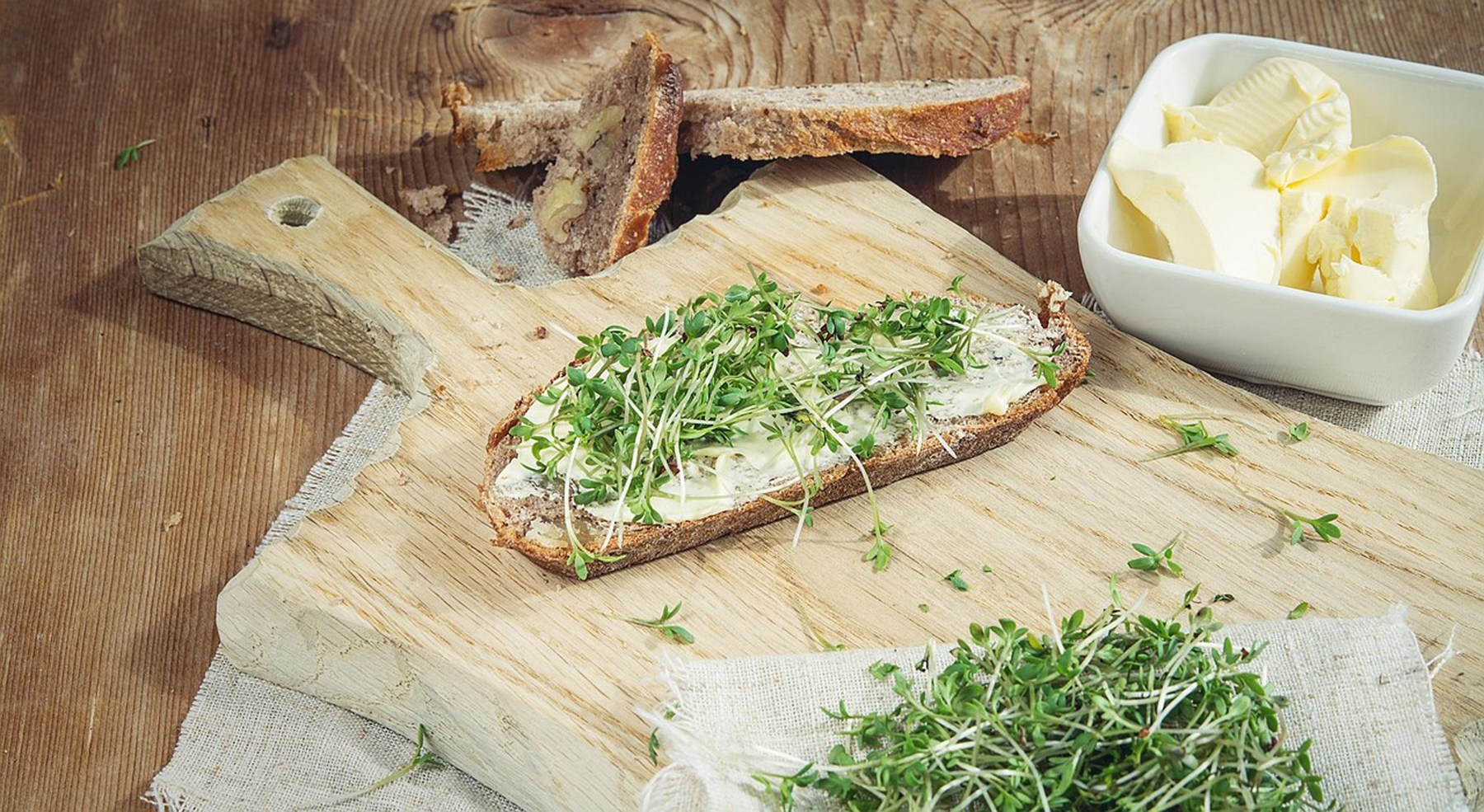Many years ago, I had a gallery space that showcased the work of local artists. It was located in a charming, renovated district that had been saved from a sad decline. Not only was it a delight to be a part of bringing old architecture back to its glory and bringing area artists’ talents into public view, but it was always a delight to meet and chat with the people discovering this eclectic area of town. My gallery space had a loft, which allowed me to work on interior projects when no one was in the gallery. It was a partially open loft, so I could hear people enter and could quickly leave my desk to greet anyone dropping in to explore.
One day, two gentlemen came into the gallery. They seemed to be looking for ways to amuse themselves while waiting for their wives. They were having fun browsing the eclectic mix of art, furniture, and repurposed industrial ambiance when they came across the solid maple and cherry blocks of wood made by a local woodworker. These were actually cutting boards, but the gentlemen referred to them as blocks of wood, and these blocks of wood sparked a whole new direction to their amusement, leading them to reminisce and elaborate about the great things one could do with one of these.
One said that they could be a writing surface when there’s no table available. The other one said they could be a wedge to hold a window open or a block to hold a door open. This then led to the idea that they could even be a wheel chock for a trailer or a carving block for woodcuts… of course! Why didn’t I think of these? There were so many reasons to own one of these “blocks of wood”, and I had not even realized their full diversity.
At last, they came to the idea of cutting veggies, fruits, and meats, which morphed into using them as serving trays as well! Yes! That’s what I was thinking! They were on the cutting edge of charcuterie before charcuterie was cool!
But then the conversation shifted to how to clean the wood after chopping onions, peppers, raw meat, etc. One gentleman thought chemicals should be used to kill the bacteria and fungi; the other disagreed because the chemicals could contaminate the food. Both were right.
Cutting boards definitely need to be sanitized, and there are simple, eco-friendly, nontoxic ways to do this. But before we get into sanitizing, let’s start with what makes a good nontoxic cutting board. One of my missions is helping homes stay healthy so that those who live there stay healthy, and what we bring into our kitchens is critical to keeping our food healthy. It is vital to keep chemicals and microplastics out of our food, and our choice of cooking equipment (including our cutting boards) plays a huge part in keeping our food wholesome. It’s very easy to unknowingly contaminate our food as we lovingly prepare it. According to “The Goodness Well” many cutting boards can contain toxins such as:
- Formaldehyde: Some composite cutting boards use formaldehyde in their adhesive components, something you don’t want leaching into your food.
- Triclosan: Several cutting boards are marketed as “antibacterial” due to the inclusion of triclosan, a known endocrine disruptor. However, quality wooden boards have natural antibacterial properties without the need for these chemicals.
- Plastic Boards: Certain plastic cutting boards may contain harmful chemicals such as BPA (or its alternatives like BPS, BPF, etc.), which are also endocrine disruptors. Plastic boards can also chip off plastic into your food.

Left photo credit: healthierhomes.com
Keep things simple with natural solid wood cutting boards made from any of these dense woods: Maple, Cherry, Walnut, Olive Wood, and Bamboo (it’s actually a grass, but it acts like wood). Make sure these woods are being sustainably harvested and there are no varnishes, stains, or lacquers on them; these are chemicals that can scratch off, contaminating the food. Instead of using those chemicals to enrich the wood, simply season the board with a little vegetable oil (olive oil is my preference) occasionally. Here are some reasons these woods are preferred and make safe and beautiful cutting boards:
- Maple is known for its hardness and strength, especially hard maples such as sugar maple. It’s highly resistant to scratches and dents, making it a long-lasting cutting surface due to its tight grain. This tight grain helps prevent moisture and bacteria from soaking in, reducing the risk of contamination, and it doesn’t transfer taste or odor to food. Since Maple has a smooth surface, it is very easy to clean (cleaning explained below).
- Walnut has naturally luxurious dark hues that continue to deepen with age and intricate grain patterns. It’s gentle on knives yet very durable. Its tight-grained structure minimizes moisture absorption and reduces bacterial growth, and it also resists strong food odors.
- Cherry finds a balance between hardness and knife-friendly. It’s stable when exposed to humidity and temperature changes, resisting warping and cracking. Cherry has a beautiful, warm, rich color that deepens over time and looks stunning in a kitchen. It is tight-grained and naturally antimicrobial, which helps prevent bacterial growth. Its texture is uniform and smooth, making it ideal for cutting crudités.
- Olive Wood is often repurposed from older trees, which means it can have warm tones and beautiful, deep grain patterns, making it a beautiful board to display and use. It, too, possesses natural antimicrobial properties, making it a hygienic choice for food prep. Olive wood is dense and can heal itself, which helps keep knives sharp longer. It’s a great choice for other kitchen tools as well. Lastly, olive wood is an eco-friendly option, as it is a sustainable and renewable resource.
- Bamboo is technically a grass, but it is stronger than many woods. It is naturally antibacterial and stain-resistant. It is lighter in weight than wood and is also gentle on our environment since it is highly renewable and sustainable, harvested without chemicals or pesticides.
I always recommend having at least two cutting boards: one for veggies, fruits, and bread, and one for meat, poultry, and fish. But having more than two boards, which vary in size, can make cooking even more fun than it already is, especially if there are more than one cook. Plus, varying sizes take charcuterie to the next level.
Using your cutting boards to prepare and serve food means keeping them sanitized is a must! Keeping them sanitized is also “a must” if they are used as a window wedge, door block, or wheel chock. I would think twice about taking them out of the kitchen, though …unless you’re taking them to the dining table or buffet; then by all means go for it.

The only way to sanitize them is with digestible products. These are safer than, and as effective as, harsh synthetic chemicals; please do not fall for any misleading advertising that says otherwise. To sanitize, after using the board, wipe off any food or juice; then simply apply a liberal coating of salt; let it set for 5 minutes, then wipe it with ½ cup of vinegar, followed by a water-dampened cloth. (Fresh-squeezed lemon juice works great instead of the vinegar.) Let the board air dry before storing. Use this technique especially when raw meat has been on the board, but it is also wonderful for fruits and veggies. “Wipe and go” is such an easy way to keep a cutting board sweet-smelling, sanitary, and ready for the next cooking creation. An additional perk is that you probably already have these ingredients in your cabinet. Make it an instinctive habit to disinfect the boards after each use.
Another way to disinfect and deodorize a wooden board is to rub it with baking soda, then spray it with vinegar and let it sit for 5 minutes. After 5 minutes, rinse with clear water, wipe with a towel, and allow it to air dry. This mix is fun because the baking soda and vinegar create a fizzy, bubbly reaction.
Wiping cutting boards by hand with either of these nontoxic methods is quick and easy. Just remember to never put a wooden cutting board in a dishwasher. The heat and excessive water will ruin the board.
To help keep the woods’ color rich and beautiful, wipe them with vegetable oil when they start looking a bit forlorn (my preference is Olive Oil). This shifts the cutting board from being a utilitarian piece to an enticing and appetizing serving tray. There’s something about beautiful wood that warms the heart and makes everything displayed on it look delightful.
These methods work fabulously on all your wood cooking utensils. Wood cooking utensils, cutting boards, chopping blocks, dough bowls, and mixing bowls have been around for centuries, and these timeless cleaning methods have stood the test of time.


Leave A Comment